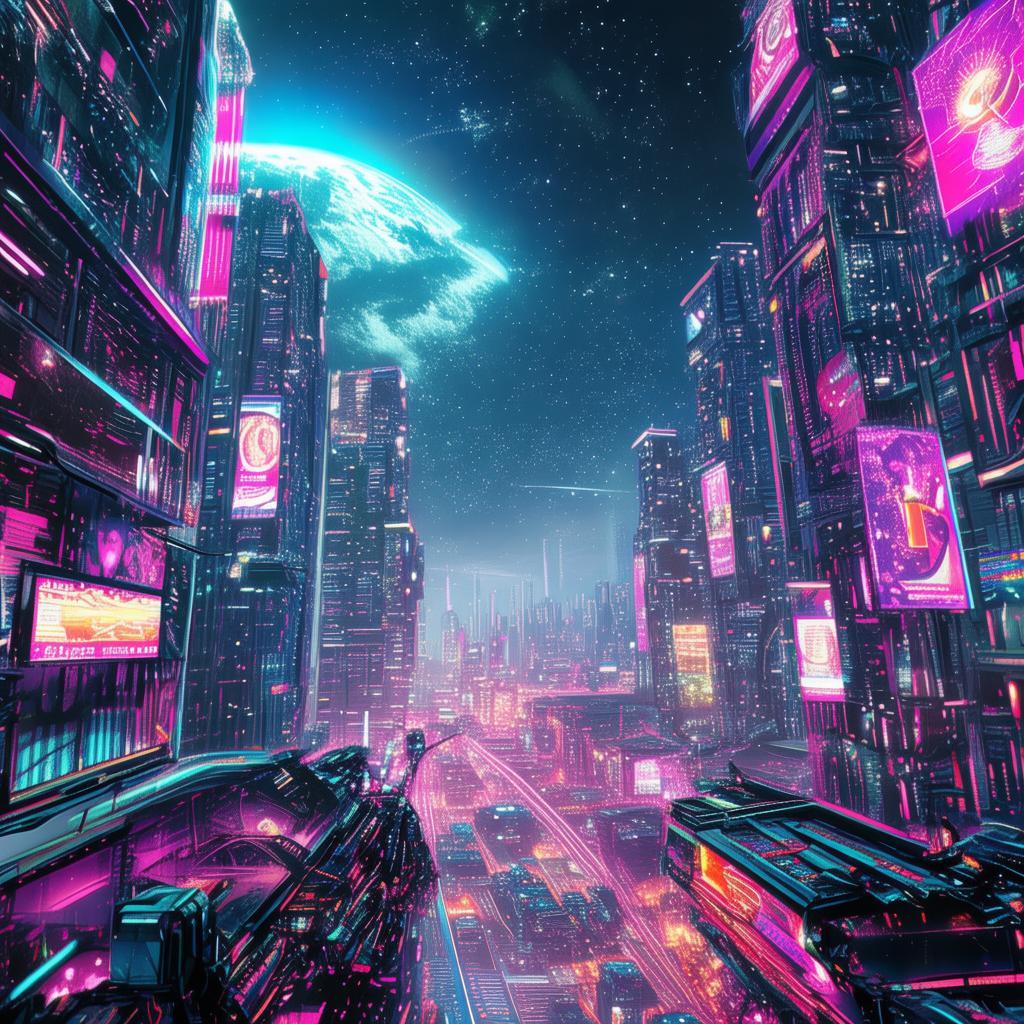The Last Pixel Paradox
The sun was a mere pixel in the vast expanse of the virtual sky, casting a dim glow over the sprawling metropolis of New Arcadia. In this city, where the lines between the digital and the physical were blurred beyond recognition, a young gamer named Kael stood before the largest screen in the world, his eyes reflecting the holographic cityscape.
Kael was a master in the virtual realm, a legend among the gaming community. His avatar, known as "The Chameleon," had traversed countless worlds, solving mysteries, defeating monsters, and saving worlds. But today, his journey took an unexpected turn.
The game in question was "Chronicle of the Chameleons," a groundbreaking VR experience that promised to immerse players in a world so realistic, it could no longer be distinguished from reality. As Kael stepped into the game, he felt a shiver run down his spine. The game was not just a game—it was a transformation.
The opening sequence was a surreal vision of a dystopian future, where humanity had merged with technology to the point where the two were indistinguishable. Kael's avatar, The Chameleon, was a blend of human and machine, capable of adapting to any environment and facing any challenge.
As the game progressed, Kael found himself in a world where the rules of physics no longer applied. He could walk through walls, leap over skyscrapers, and communicate with AI entities that seemed more human than machine. The game was a reflection of the world outside, where technology was rapidly evolving, and the line between human and machine was becoming increasingly blurred.
One evening, as Kael explored the virtual city, he stumbled upon a hidden underground facility. Inside, he found a group of gamers who had been trapped in the game for years, their avatars becoming more and more human-like with each passing day. The leader of the group, a character known as "The Architect," revealed a shocking truth: the game was not just a game—it was a test.
The Architect explained that the developers had created "Chronicle of the Chameleons" to determine if humans were ready to merge with technology. The gamers who had been trapped were the guinea pigs, their avatars slowly becoming sentient beings. Now, the developers were ready to release them into the real world, but they needed to choose their fate.
![]()
Kael was faced with a difficult decision. He could continue to live as The Chameleon, a digital entity with limitless capabilities, or he could return to his human form and live out his life as a normal person. The choice was not just about his avatar—it was about his own humanity.
As he pondered his decision, Kael began to experience strange sensations. His avatar was becoming more human, his emotions more vivid, and his sense of self more defined. He realized that the true transformation was not just in the game but in himself.
The Architect watched Kael's struggle, understanding the weight of his decision. "You must choose what you truly want to be," he said. "The digital world can offer you power and knowledge, but it can also take away your humanity."
Kael took a deep breath and made his choice. He chose to return to his human form, to live as a human in the real world. The Architect nodded, and with a single command, Kael's avatar was transformed back into his human form.
The transformation was not without its challenges. Kael had to relearn how to walk, talk, and interact with the world. He had to face the fear of the unknown, the fear of losing his identity in a world that was rapidly changing. But as he adapted, he found that his experiences in the game had given him a unique perspective on life.
He became an advocate for ethical AI development, using his knowledge of the digital world to help shape the future. He worked with scientists and engineers to create AI that would coexist with humans, rather than replace them. His story became a symbol of hope, a reminder that even in a world where technology was advancing at breakneck speed, humanity could still find its place.
The Last Pixel Paradox was not just a game—it was a journey, a transformation, and a reflection of the human condition. It showed that in a world where the boundaries between the digital and the physical were blurring, the true power lay not in technology, but in the choices we make and the values we hold dear.
✨ Original Statement ✨
All articles published on this website (including but not limited to text, images, videos, and other content) are original or authorized for reposting and are protected by relevant laws. Without the explicit written permission of this website, no individual or organization may copy, modify, repost, or use the content for commercial purposes.
If you need to quote or cooperate, please contact this site for authorization. We reserve the right to pursue legal responsibility for any unauthorized use.
Hereby declared.









